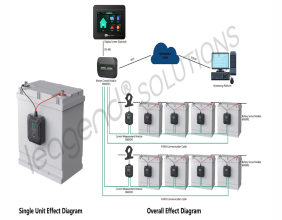Highlights
- Duke Energy announces leadership promotions in federal affairs and sustainability
- Focus on regulatory engagement and infrastructure strategy under new appointments
- Recent share performance trails broader S&P 500 and Russell 1000 benchmarks
Duke Energy Corporation, listed on the NYSE Composite under the ticker (NYSE:DUK), operates in the regulated electric utility sector. The company plays a significant role in generating, transmitting, and distributing electricity across multiple U.S. states. As part of the S&P 500 and Russell 1000 indices, its performance is often evaluated in relation to broader market indicators. Recently, Duke Energy made strategic changes within its federal affairs leadership team, indicating a refined focus on long-term policy and regulatory collaboration.
New Appointments Reinforce Federal Engagement Strategy
Effective from early July, Duke Energy promoted Pepper Natonski to a senior vice president role overseeing federal affairs, policy, and sustainability. Tom Craig, also elevated, will serve as vice president of federal affairs. These appointments signal the company's intent to deepen its engagement with national policy frameworks, particularly as they relate to energy infrastructure and sustainable grid development.
The transition in leadership comes amid broader efforts to align operations with evolving federal standards. By bringing more focus to the federal front, Duke Energy appears to be reinforcing its presence in energy policy discussions, while also managing internal transformation aligned with environmental goals.
Recent Stock Activity Reflects Broader Sector Trends
The company's recent market performance has experienced a mild decline, even as broader indices such as the S&P 500 remained relatively stable. While no direct causal link can be drawn, the timing of leadership changes and share movement has drawn attention to how corporate governance shifts may interplay with market sentiment.
Over a longer period, Duke Energy's performance, including dividend returns, has remained consistent with trends in the U.S. electric utilities sector. The share movement has largely echoed broader patterns observed in the Russell 1000, where many established utilities maintain steady positions due to their regulated nature and infrastructure stability.
Regulatory Pathways and Infrastructure Development Remain Priorities
As the company focuses on sustainable energy systems and regulatory partnerships, extensions of nuclear licenses and modernization of infrastructure are likely to remain integral to its roadmap. With increasing emphasis on resilient energy delivery and grid evolution, federal engagement could influence the company's alignment with national energy directives.
Dividend distributions remain a part of Duke Energy’s long-term financial approach, reinforcing its identity as a stable utility provider within the regulated space. These payouts continue to be a key feature of how the company returns value to its shareholders over time.
Strategic Evolution Aligned With Policy and Growth Frameworks
The leadership transitions, coupled with the company’s emphasis on load growth and infrastructure renewal, position it for deeper involvement in shaping energy policy. These developments reflect an operational strategy that leans on constructive federal collaboration and strategic in energy delivery capabilities.
By maintaining a strong regulatory presence in Washington, Duke Energy (NYSE:DUK) appears to be strengthening its capacity to respond to evolving national energy expectations. The executive promotions underscore the company's direction toward proactive policy engagement, which complements its role within the regulated electric utility sector.
.jpg)



